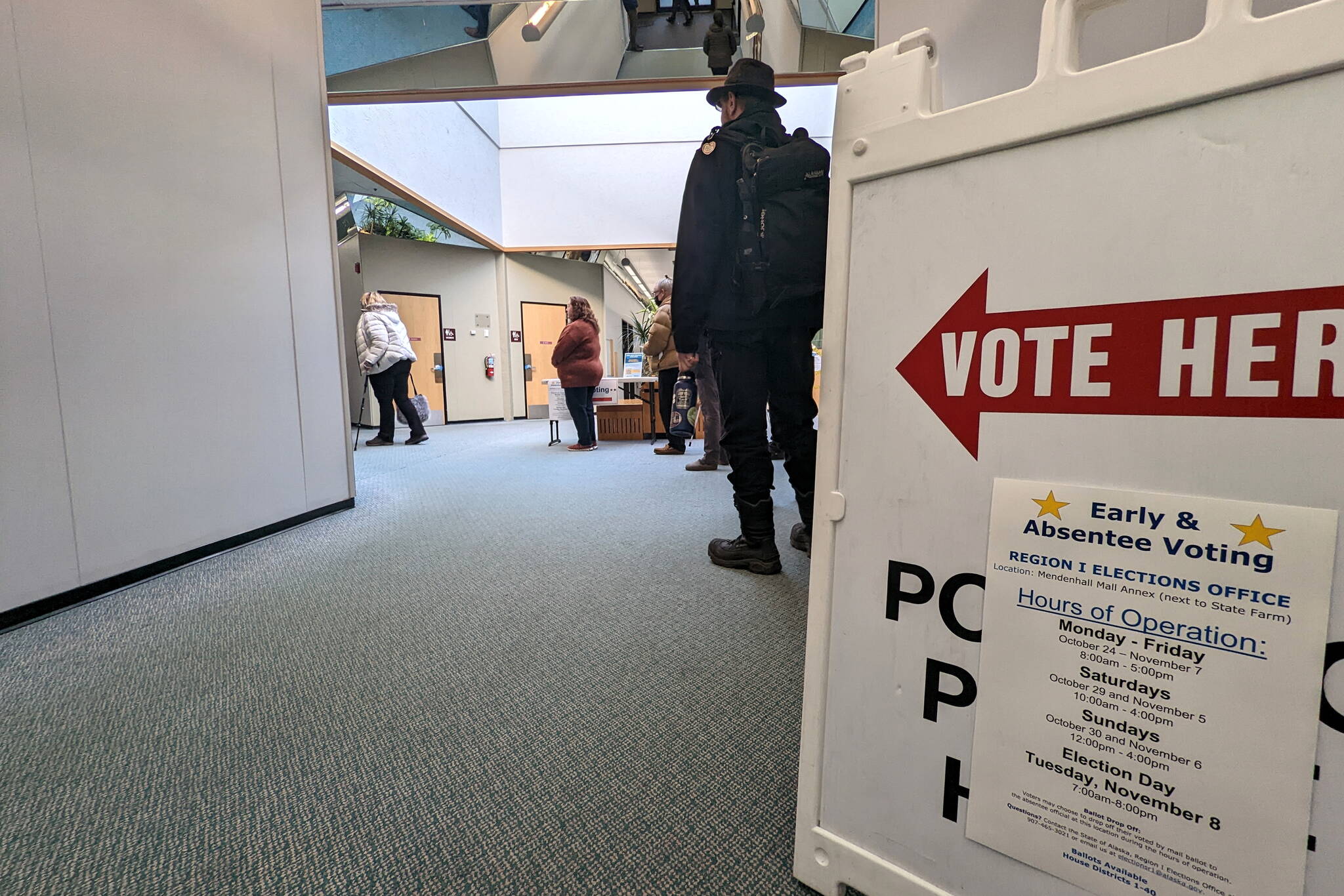Today is an Election Day that features multiple congressional races, a gubernatorial race and dozens of state Legislature races.
But while the first results are expected to be announced at about 9 p.m. Tuesday, an hour after polls close, the actual winners of many races won’t be known until the day before Thanksgiving due to Alaska’s new ranked choice voting system. Updates of first-choice ballots only will be provided intermittently until that date, at which point second- and third-choice ballots will be instantly tallied on statewide TV for races where no candidate has a majority of first-choice votes.
“This is because precinct scanners cannot perform ranked choice voting tabulation,” the Alaska Division of Elections stated in its general election media guide.
Polling places will be open on Election Day from 7 a.m. to 8 p.m. All faxed ballots must also be submitted by 8 p.m. and mail-in ballots must be postmarked by Tuesday. The elections division will accept domestic mail-in ballots for 10 days after the election and international ballots for 15 days, with the ranked-choice tally scheduled at 4 p.m. on the final day.
The outcome of the election’s three biggest races — for governor, U.S. House and U.S. Senate — remains in question, according to some pundits and pollsters. Also on the ballot is a lone proposition asking voters if they favor a state constitutional convention, along with 59 of the 60 seats in the Alaska State Legislature (including all three of Juneau’s seats) and whether to retain several judges.
More than 64,000 early and absentee ballots were received by the elections division as of Sunday afternoon, and thousands more are expected to be tallied in the final results. That exceeds 63,228 Alaskans casting such votes during the last midterm election in 2018, but is well below the totals for the 2020 election when nearly 100,000 mail-in ballots were received due to the COVID-19 pandemic.
The U.S. Justice Department is sending officials to monitor compliance in four Alaska communities: Bethel, Dillingham, Kusilvak and Sitka. Observers also monitored numerous communities, including Juneau, during the primary and special U.S. House election in August as part of a settlement in a lawsuit from nearly a decade ago that found state officials weren’t providing language assistance to Alaska Natives.
That remains a problem, according to the federal observers this year who reported language-related problems (in Dillingham and Kusilvak in particular) that could disenfranchise Alaska Native voters in violation of the Voting Rights Act.
“DOJ has informed us that they will let us know if they see anything they think is an issue that the division can address on election day,” Tiffany Montemayor, a Division of Elections spokesperson, wrote in email Monday. “After the election, DOJ will file observer reports in the Toyukak case, as they did after the primary.”
In addition to the new ranked choice voting, there are new statewide voting districts resulting from the decennial redistricting process. In Juneau, that means a smaller District 4 (currently represented by state Rep. Sara Hannan, who is facing challenger Darrell Harmon) includes downtown Juneau, Douglas, Lemon Creek and parts of the Mendenhall Valley. District 3 (represented by Rep. Andi Story, who is uncontested) includes parts of the Valley, Auke Bay, and the northern Panhandle communities of Gustavus, Haines, Klukwan and Skagway.
• Contact Mark Sabbatini at mark.sabbatini@juneauempire.com
The following are polling places for Juneau and Douglas:
District 3: UAS Recreation Center, Auke Bay Ferry Terminal, Glacier Valley Baptist Church, Shepherd Of The Valley Lutheran Church, Mendenhall Valley Public Library.
District 4: Nugget Mall, State Of Alaska Library Archives Museum, Elizabeth Peratrovich Hall, Juneau Tlingit Haida Community Council, Alaska Electrical Light & Power, Mendenhall Mall, Juneau Fire Station, Douglas Public Library.
Voters can look up their information online at myvoterinformation.alaska.gov/.

